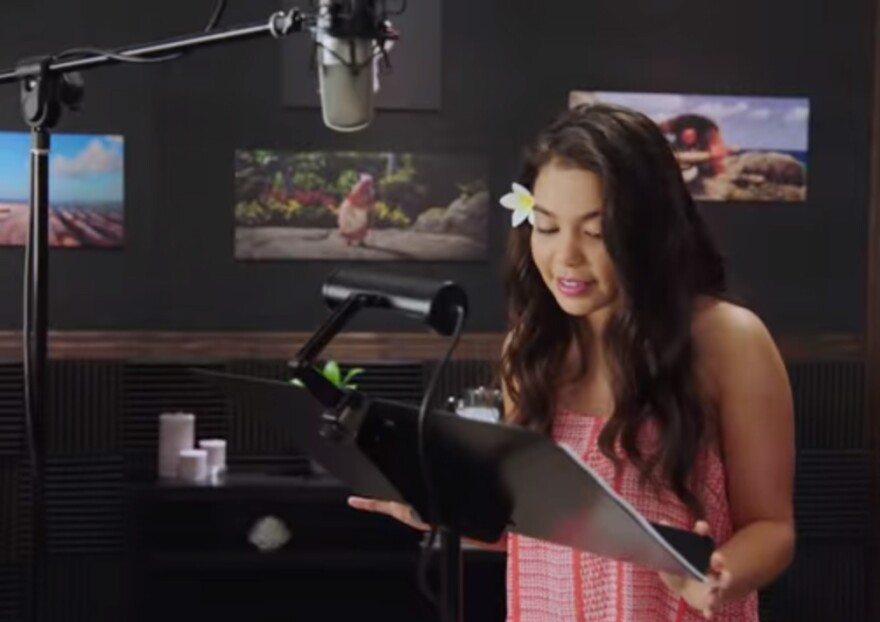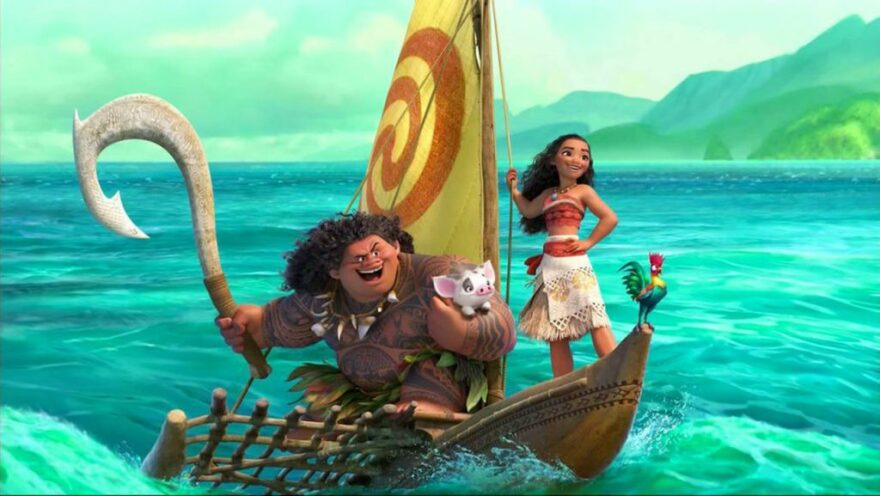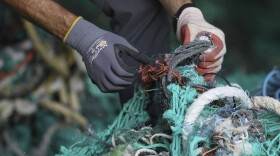You’ve probably heard the news. The Walt Disney animated film Moana has been translated into Hawaiian. Most Disney productions are officially dubbed in more than 46 global languages after appearing in English. But this is a first for Hawai?i and the Hawaiian speaking community. So what does it take to translate a Disney movie? HPR’s Ku?uwehi Hiraishi has the answer.
More than 26,000 people speak the Hawaiian language or ??lelo Hawai?i, according to the U.S. Census Bureau. The movement to revitalize the ??lelo Hawai?i has come a long way, says Heather Giugni, a filmmaker and one of the producers tasked with overseeing the Moana dubbing project.

"Taking a project like Moana, a Disney project that is loved around the world now, and having the opportunity to translate it into Hawaiian, ??lelo Hawai?i, is fantastic," says Giugni.
The animated film tells the story of a Polynesian princess, Moana, on an adventure with her chicken, Heihei, and the demigod Maui. It brought in an estimated $643 million at box offices worldwide. The movie has been dubbed in Tahitianand M?ori, but a Hawaiian version took some convincing, says Chris Lee, founder and director of University of Hawai?i's Academy of Creative Media.

"One of the great things is because we had this infrastructure in terms of individuals who could do translations, and direct, and cast, and also record, I could promise them a sort of seamless process in terms of getting this done and minimize the amount of bandwidth they would have to expend helping us do this," says Lee.
The translation of the hour and 47 minute-long film fell on the shoulders of Hawaiian language professor Puakea Nogelmeier and his team of five at Awaiaulu, a community non-profit specializing in Hawaiian-language translation.

"You could put the whole thing through Google Translate and come up with something," says Nogelmeier, "But we wanted what’s accurate. We wanted language that’s going to be understood by an audience today and especially by an audience of 5 and 10-year-olds, right?"
The linguist also saw an opportunity to revive older forms of ??lelo Hawai?i.

"There’s a place where the little girl goes I wanna see," says Nogelmeier, "And there’s actually a turn of phrase – inane. Inane means like 'Ho, let me see.' And it might not be in widespread use today but it’s so apparent from the setting, and it’s so proper, and it links to an older kind of language."

Nogelmeier and his team have been working since July to translate the entire movie. But the trickiest part was having the language fit the animation.

"They made those lips match the English script and it’s a pretty good match. Now we have to make Hawaiian match those lips," says Nogelmeier, "So accuracy got adjusted for time and then it got adjusted heavily for matching lip. And that was an ongoing, like the doing the New York Times crossword in pen with your eyes close."
As challenging as this undertaking was, his hope is it will help build a stronger and broader ??lelo Hawai?i speaking community, and perhaps even an industry.
Casting for Disney’s Moana is still underway for fluent Hawaiian language speakers and singers. Deadline for submissions is November 17, 2017, 5:00 p.m. Click here for instructions on submissions.




